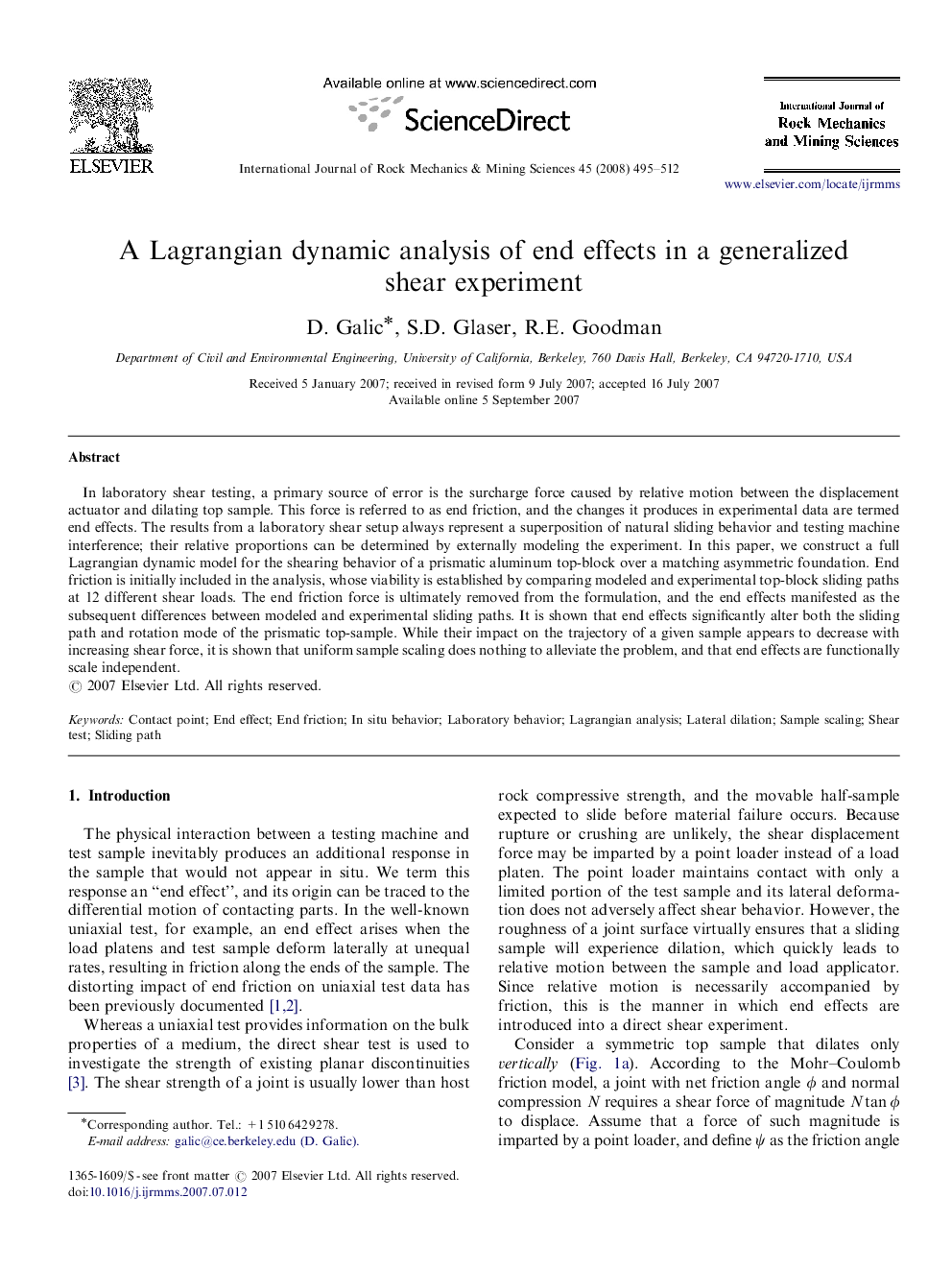| Article ID | Journal | Published Year | Pages | File Type |
|---|---|---|---|---|
| 810416 | International Journal of Rock Mechanics and Mining Sciences | 2008 | 18 Pages |
In laboratory shear testing, a primary source of error is the surcharge force caused by relative motion between the displacement actuator and dilating top sample. This force is referred to as end friction, and the changes it produces in experimental data are termed end effects. The results from a laboratory shear setup always represent a superposition of natural sliding behavior and testing machine interference; their relative proportions can be determined by externally modeling the experiment. In this paper, we construct a full Lagrangian dynamic model for the shearing behavior of a prismatic aluminum top-block over a matching asymmetric foundation. End friction is initially included in the analysis, whose viability is established by comparing modeled and experimental top-block sliding paths at 12 different shear loads. The end friction force is ultimately removed from the formulation, and the end effects manifested as the subsequent differences between modeled and experimental sliding paths. It is shown that end effects significantly alter both the sliding path and rotation mode of the prismatic top-sample. While their impact on the trajectory of a given sample appears to decrease with increasing shear force, it is shown that uniform sample scaling does nothing to alleviate the problem, and that end effects are functionally scale independent.
